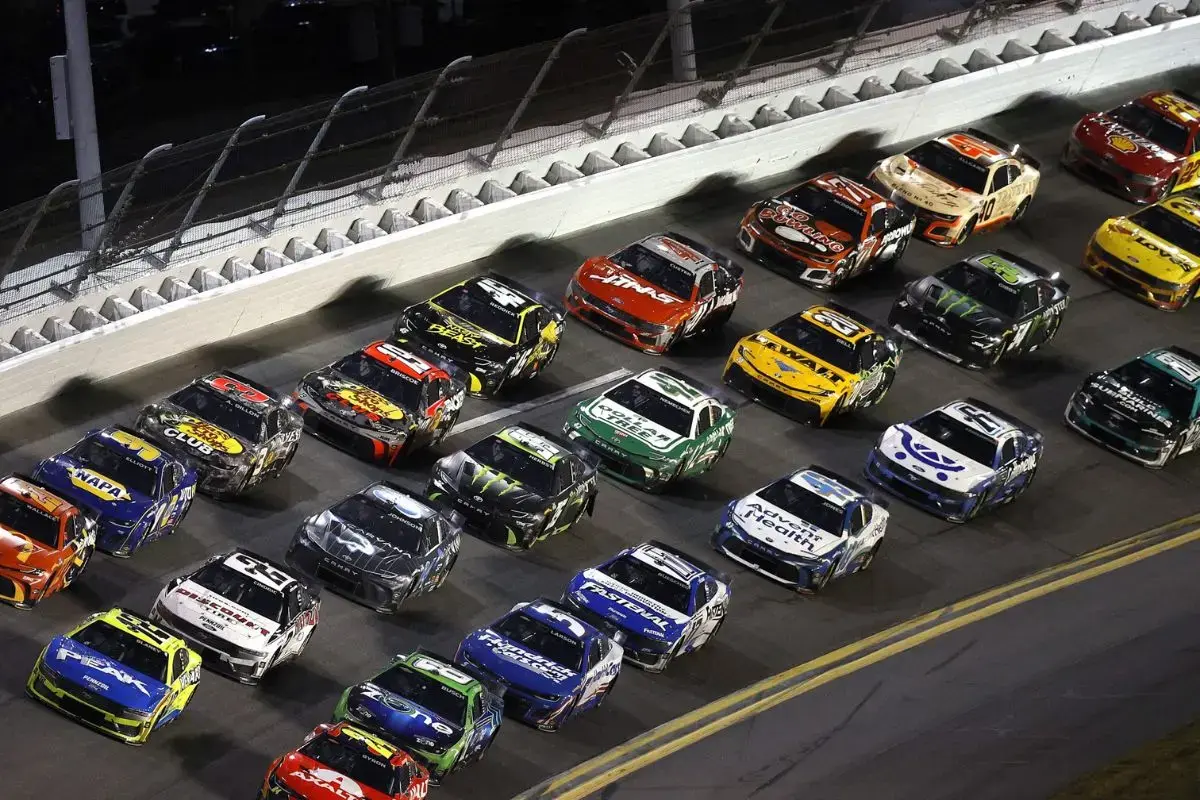Origins and Early History
Built in 1909 by Carl G. Fisher, James A. Allison, Arthur C. Newby, and Frank H. Wheeler, the 2.5-mile oval was designed as a high-speed testing facility for America’s growing automotive industry. Early races were held on a dangerous crushed stone-and-tar surface before the track was repaved with 3.2 million bricks, earning the nickname “The Brickyard.”
The first Indianapolis 500 was held in 1911, and Ray Harroun’s win—aided by the innovation of a rearview mirror—began the tradition of IMS as a venue where engineering and endurance are rewarded.
Track Layout and Configuration
-
Length: 2.5 miles (4.02 km)
-
Turns: Four distinct corners, each banked at 9.2 degrees.
-
Straights: Virtually flat (0 degrees), long front and back straightaways.
-
Short chutes: Connect Turn 1 to Turn 2 and Turn 3 to Turn 4.
-
Surface: Asphalt with a symbolic “Yard of Bricks” at the start/finish line.
-
Width: 50 feet on straights, up to 60+ feet in corners.

Why It’s a Driver’s Track
IMS doesn’t allow for the same margin of error as more heavily banked ovals like Daytona or Talladega.
-
Minimal banking forces teams to focus on car balance and grip rather than relying on corner lean.
-
Turn symmetry is deceptive; despite nearly identical layout, conditions vary lap to lap due to temperature and wind.
-
Long straights mean drivers must carry speed, then brake hard and turn in precisely—mistakes cost time immediately.
-
Surface grip can change significantly during a race due to rubber buildup and changing track temperature.
Signature Events
The Indianapolis 500
The Indy 500 is the world’s largest single-day sporting event. Held every Memorial Day weekend, it tests drivers over 200 laps and 500 miles. The track’s prestige comes with danger—23 drivers have died in competition at IMS.
Notable Indy 500 moments:
-
1969: Mario Andretti breaks through with his only 500 win.
-
1992: Al Unser Jr. wins in the closest finish in Indy 500 history (0.043 seconds).
-
2011: J.R. Hildebrand crashes in Turn 4 on the final lap; Dan Wheldon takes the win.

The Brickyard 400 (NASCAR)
First held in 1994, the Brickyard 400 became a premier event in stock car racing. Jeff Gordon’s win in the inaugural race helped define its early importance.
Notable Brickyard 400 moments:
-
1998: Gordon becomes youngest to win two Brickyards.
-
2008: Widespread tire issues lead to multiple competition cautions, highlighting the track’s unique demands on rubber and setup.
Other Major Events at IMS
-
Formula One (2000–2007): Ran on a hybrid road course using part of the oval. The 2005 race, with just six cars starting due to tire concerns, became one of the most controversial F1 races in history.
-
MotoGP (2008–2015) and IndyCar Grand Prix used the infield layout, testing riders and drivers in a different format.
The IMS Road Course
Opened in 2000 and updated multiple times, the road course integrates part of the frontstretch oval with tight infield corners. It’s used for:
-
NASCAR Verizon 200
-
IndyCar
-
Former F1 and MotoGP events
The road course configuration balances top-end speed with braking skill, and continues IMS’s role as a multi-discipline venue.
Technical Demands
 Focused Health 250 Qualifying Order” width=”1200″ height=”800″ srcset=”https://slicksandsticks.com/wp-content/uploads/2025/02/Focused-Health-250-Qualifying-Order.webp 1200w, https://slicksandsticks.com/wp-content/uploads/2025/02/Focused-Health-250-Qualifying-Order-300×200.webp 300w, https://slicksandsticks.com/wp-content/uploads/2025/02/Focused-Health-250-Qualifying-Order-1024×683.webp 1024w, https://slicksandsticks.com/wp-content/uploads/2025/02/Focused-Health-250-Qualifying-Order-768×512.webp 768w, https://slicksandsticks.com/wp-content/uploads/2025/02/Focused-Health-250-Qualifying-Order-630×420.webp 630w, https://slicksandsticks.com/wp-content/uploads/2025/02/Focused-Health-250-Qualifying-Order-150×100.webp 150w, https://slicksandsticks.com/wp-content/uploads/2025/02/Focused-Health-250-Qualifying-Order-696×464.webp 696w, https://slicksandsticks.com/wp-content/uploads/2025/02/Focused-Health-250-Qualifying-Order-1068×712.webp 1068w” sizes=”auto, (max-width: 1200px) 100vw, 1200px” />
Focused Health 250 Qualifying Order” width=”1200″ height=”800″ srcset=”https://slicksandsticks.com/wp-content/uploads/2025/02/Focused-Health-250-Qualifying-Order.webp 1200w, https://slicksandsticks.com/wp-content/uploads/2025/02/Focused-Health-250-Qualifying-Order-300×200.webp 300w, https://slicksandsticks.com/wp-content/uploads/2025/02/Focused-Health-250-Qualifying-Order-1024×683.webp 1024w, https://slicksandsticks.com/wp-content/uploads/2025/02/Focused-Health-250-Qualifying-Order-768×512.webp 768w, https://slicksandsticks.com/wp-content/uploads/2025/02/Focused-Health-250-Qualifying-Order-630×420.webp 630w, https://slicksandsticks.com/wp-content/uploads/2025/02/Focused-Health-250-Qualifying-Order-150×100.webp 150w, https://slicksandsticks.com/wp-content/uploads/2025/02/Focused-Health-250-Qualifying-Order-696×464.webp 696w, https://slicksandsticks.com/wp-content/uploads/2025/02/Focused-Health-250-Qualifying-Order-1068×712.webp 1068w” sizes=”auto, (max-width: 1200px) 100vw, 1200px” />
Setup Balance
Teams face a tough tradeoff:
-
Maximize aero efficiency for speed on straights
-
Maintain downforce and grip for stability in flat corners
-
Pit strategy and tire wear play a major role due to long green-flag stretches
Driver Challenge
-
Corner entry: A mistake at turn-in means a lost lap—or worse.
-
Wind conditions: Swirling winds from massive grandstands affect car balance.
-
Focus and fatigue: Both the Indy 500 and Brickyard 400 push physical and mental stamina for hours at a time.
Strategic Racing
-
Pit road at IMS is long and challenging. Green-flag stops require perfect execution.
-
Restarts are often decisive. Timing is everything when passing into clean air, with aero turbulence affecting trailing cars heavily.
Legacy
IMS has seen the sport’s biggest names claim their place in history:
-
IndyCar: Foyt, Mears, Unser, Andretti, Castroneves, Dixon.
-
NASCAR: Gordon, Johnson, Stewart.
The “Yard of Bricks” remains one of racing’s most meaningful traditions. Every winner stops to kiss the bricks—no matter the series.
News in Brief: Everything to Know About Indianapolis Track
Indianapolis Motor Speedway remains one of NASCAR’s most historic and challenging tracks. With its long straights, sharp corners, and unique layout, it continues to test both strategy and skill. This year’s event schedule brings high stakes for the NASCAR Cup Series and NASCAR Xfinity Series, and teams must adapt quickly. From qualifying rounds to the final laps, each moment at Indy matters. Fans and drivers alike know this track demands respect, and the results often reflect that.
ALSO READ: Denny Hamlin at Indianapolis Motor Speedway: A Look at His Winless Record
Our Reader’s Queries
Q. Why is the Indianapolis Motor Speedway so important?

